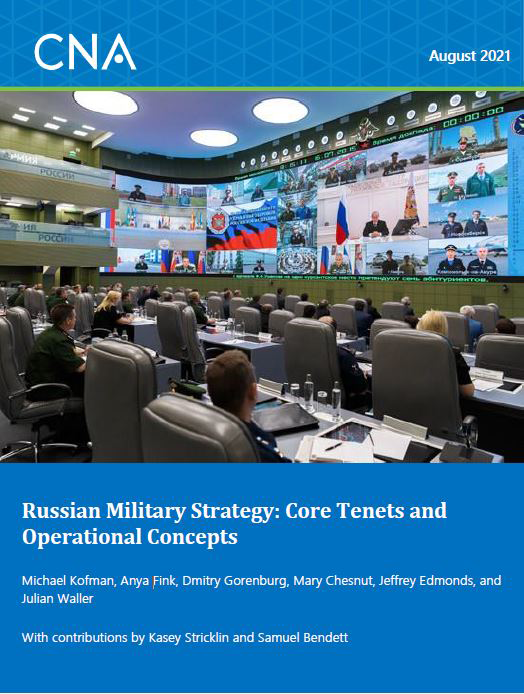Executive Summary
Russian military leaders describe the current military strategy as one of ‘active defense.’ This concept has a deep history in Soviet military thought, evolving from an operational discussion towards a strategic framework in the late-Soviet period. In Russia, military strategy represents the highest form of military art, offering general tenets on the theory and practice of war, preparation for national defense, ways of preventing conflict, managing forces in wartime, and delineation of strategic operations. Taken together, the military strategy and associated operational concepts shed light on the ‘Russian way of war,’ influences, and central thesis. Russian strategy reflects choices in planning, operational concepts, and the force structure or capabilities to realize them. This study interrogates the choices made in Russian military strategy, under the rubric of active defense, their underlying thesis, and expression in strategic-operational concepts.
The notion of activity in Russian military strategy describes both preventative measures taken before a conflict breaks out, to deter it, along with tenets for conducting the war. During a threatened period, or escalating crisis, Russian forces take preventative measures to neutralize threats, which can include preemptive use of limited force in a time of perceived imminent threat. A defensive strategy emphasizes maneuver defense, and counterattack. It is a defensive-offense that envisions persistent engagement of an opponent throughout the theater of military action, to include critical infrastructure in their homeland, executing strategic operations that affect an adversary’s ability or will to sustain the struggle. Consequently, Russian military strategy is comprised of operational concepts that represent defensive and offensive constructs without clear distinction. Active defense devalues strategic ground offensives, privileging the aerospace domain, maneuver defense, and forms of noncontact warfare.
The sense of ‘active’ within active defense envisions demonstrations or limited use of force, to convince opponents that the costs of aggression would exceed desired benefits. From a Russian perspective, states chiefly use nonmilitary means, and indirect approaches, to achieve political goals. Hence the Russian military seeks to offer answers to what the state perceives as forms of undeclared warfare, containment, and coercion. However, the nature of war is understood as one where non-military means are effective because they are backed by technologically advanced military capability. A strategic conventional offensive remains decisive in the initial period of war. The principal threat envisioned is an integrated massed air strike against critically important objects of military, economic, and political significance in Russia. The strategic nature of long-range precision guided weapons, and other forms of nonkinetic attack, like electronic warfare, are foremost in Russian military considerations.
Download reportDISTRIBUTION STATEMENT A. Approved for public release: distribution unlimited.
Details
- Pages: 104
- Document Number: DRM-2021-U-029755-Final
- Publication Date: 8/6/2021
